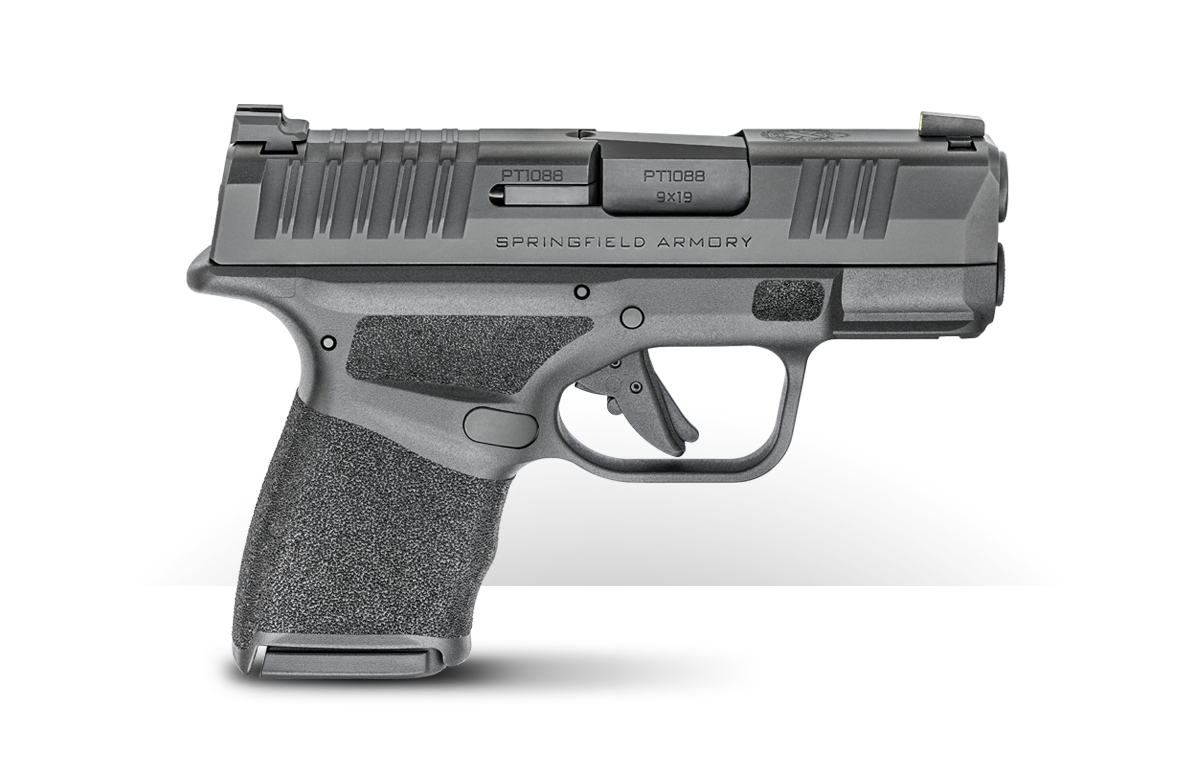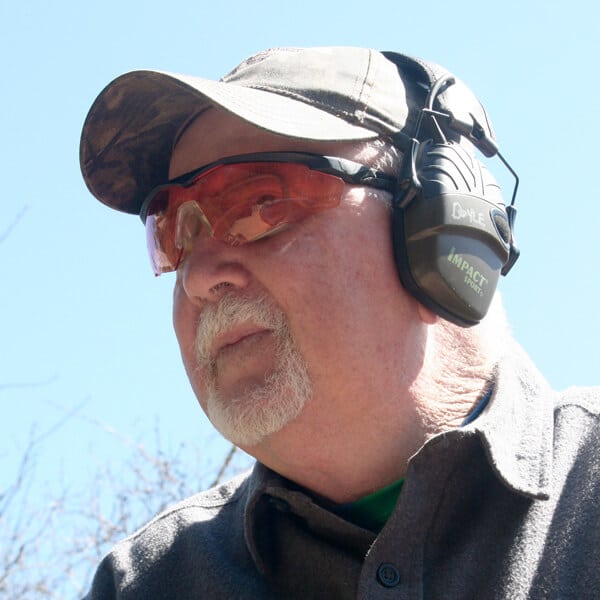Pistol Practice with a Purpose
April 9th, 2025
8 minute read
A point we might all agree on is that to succeed in most any physical skill, practice is essential. This remains true no matter if we want to be at our best shooting a basketball, playing a musical instrument or running a pistol.
While some people might be blessed with superior hand/eye coordination and pick up the game a little faster, we all need to invest some time and effort in mastering foundational marksmanship and gun handling skills so that they become second nature. This is especially true for those individuals who have taken up the handgun for personal defense.
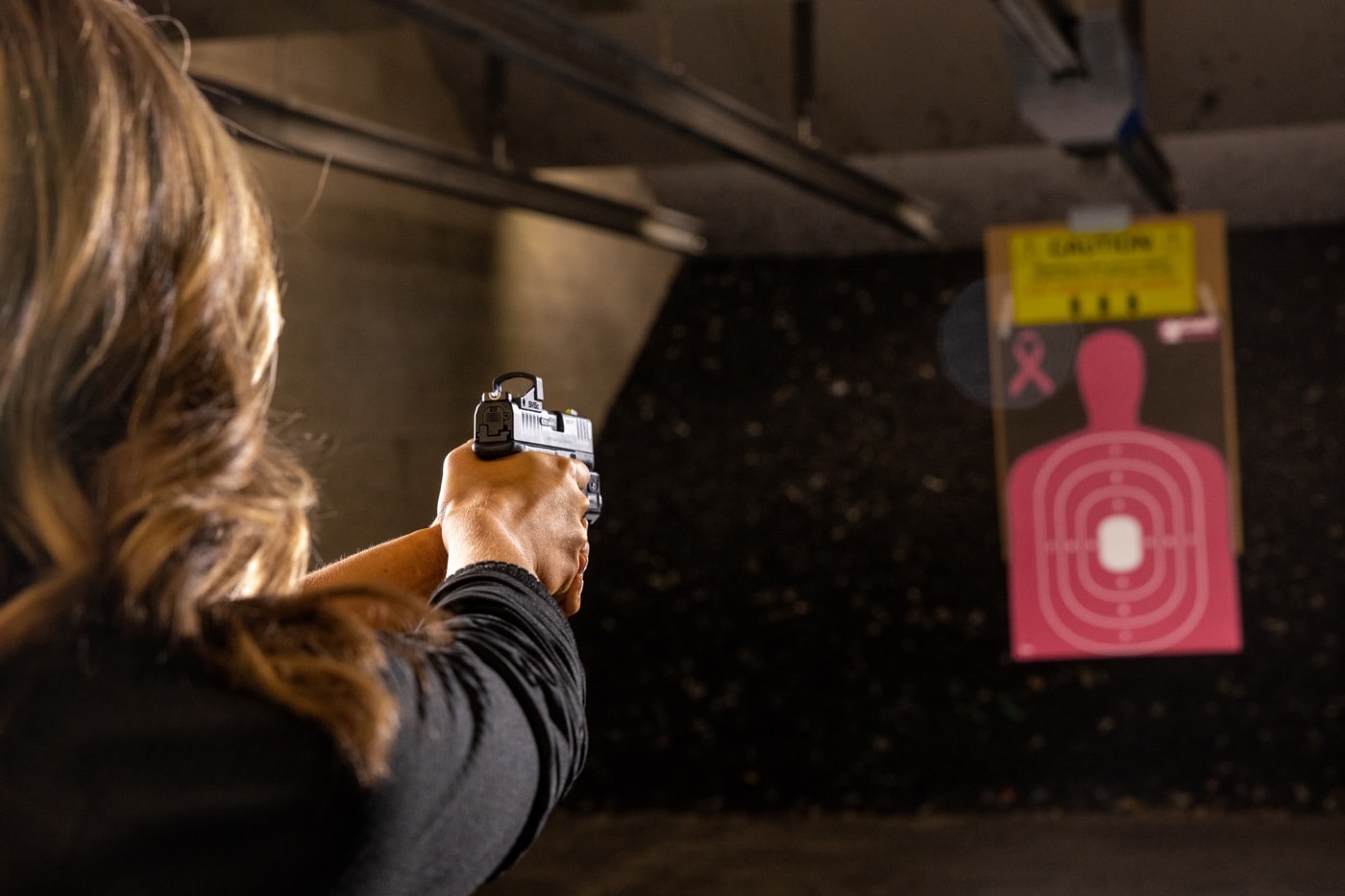
Quite simply, should you need to use a firearm to protect your life there likely will be little time to respond. Since you are working from behind on the power curve, your response must be intuitive. The mechanical aspects have to be pretty much automatic, leaving your mind clear to make that critical decision as to whether or not the use of deadly force is justified.
Assuming you had some initial training to get you on the right track, bear in mind it was just the first part of the journey — not a destination. For those who might take up the gun and do what is minimally required, their safety could come down to just luck.
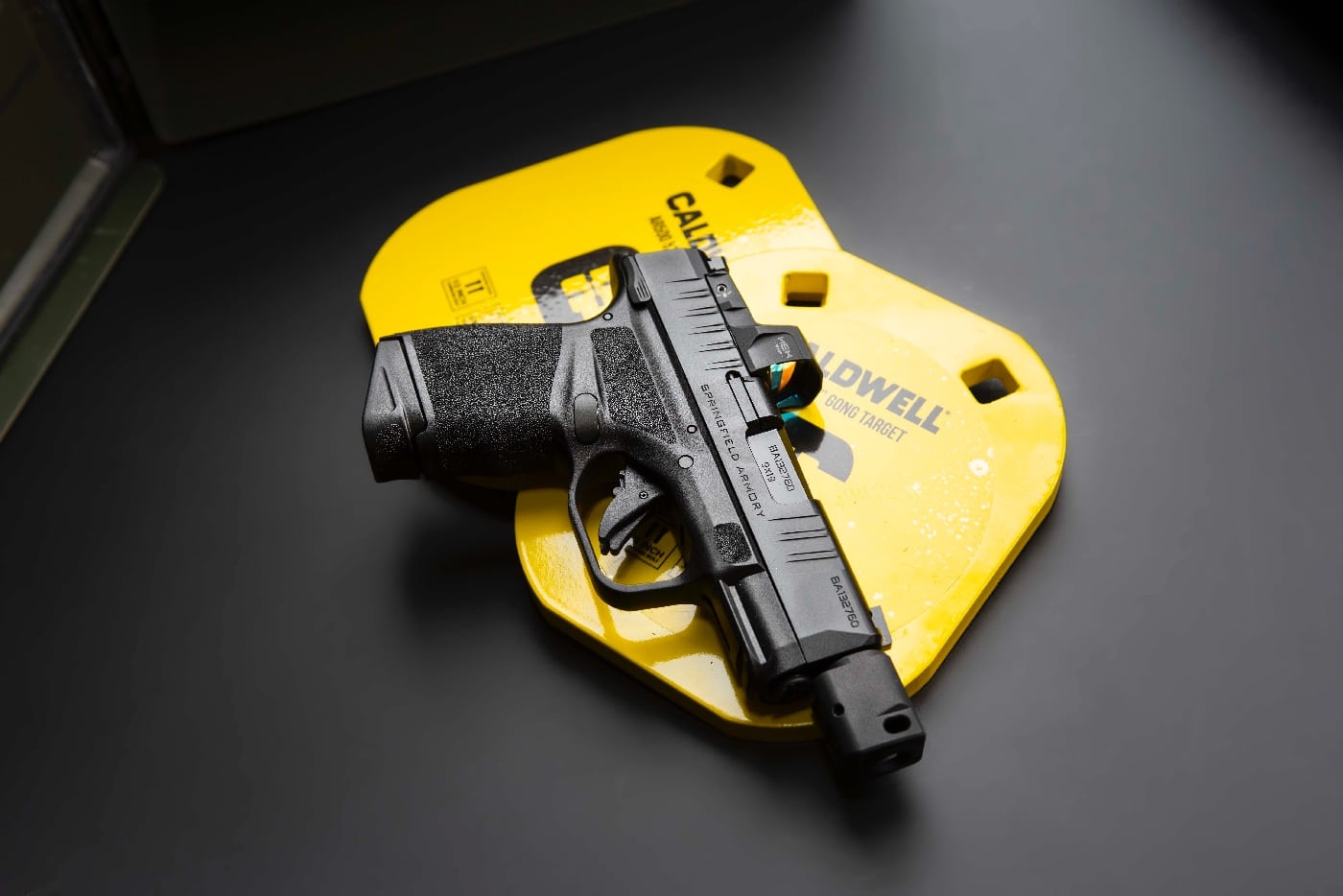
Chance, however, continues to favor the prepared user. Bear in mind that firearm proficiency is a perishable skill and, from time to time, you need to sharpen those skills.
Obstacles
For most of us, modern living puts serious constraints on both our time and wallets. And unless you have been up on the mountain top the last couple of years, ammunition has gotten very expensive.
When I was a full-time trainer, I was blessed by the bullet fairy and got to shoot lots of government ammunition. Rest assured, that’s not the case anymore and I have to buy it or reload it like everybody else.
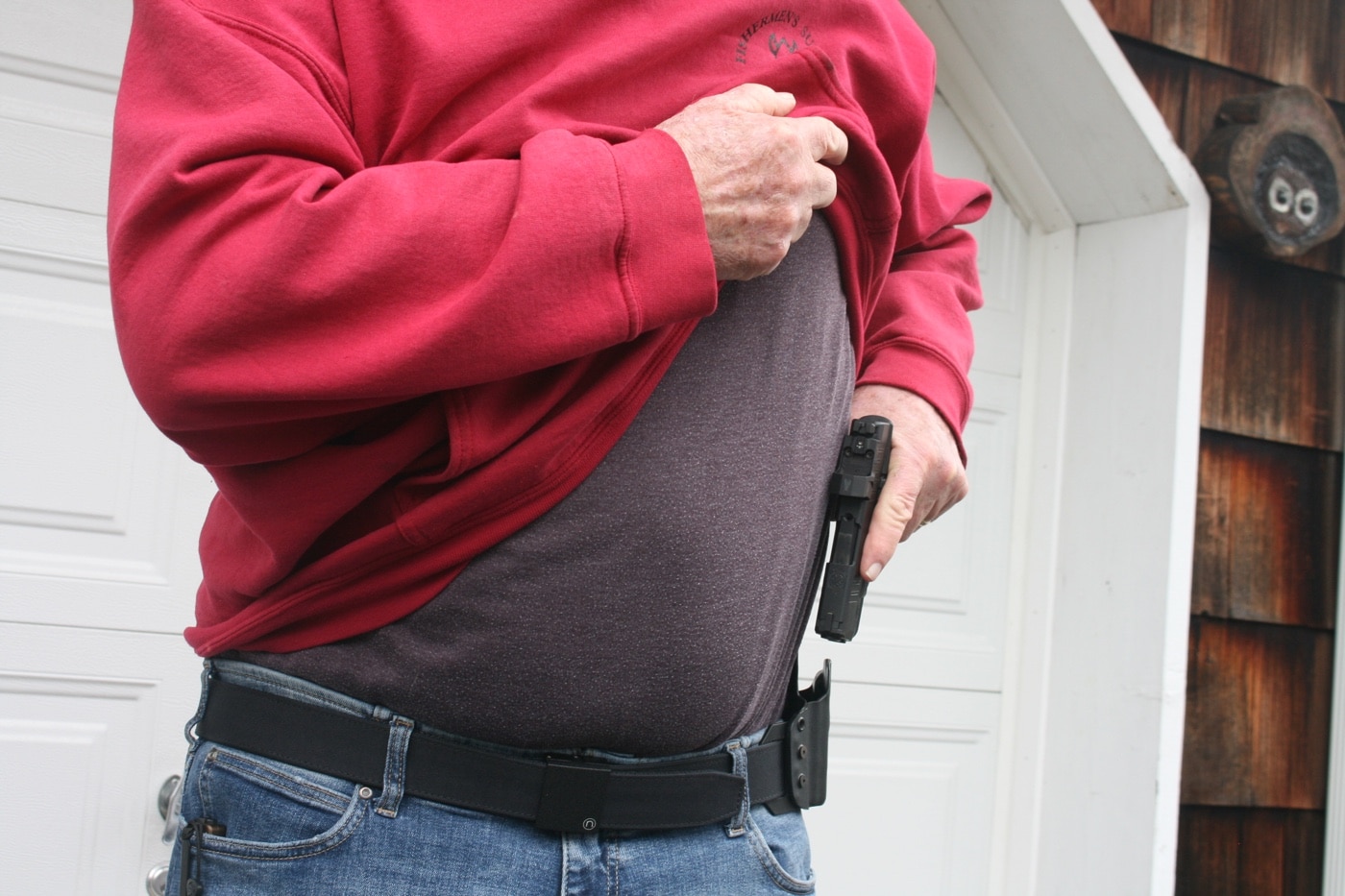
My point is that those afternoon 300-round bulletfests are now in the rear-view mirror and — unless I win the lottery — are unlikely to happen again. Like everybody else, I just have to practice smarter, which means getting the same job done with less ammo.
Another limiting factor remains the practice facility. Many public ranges have rules in place that prohibit drawing from the holster or even shooting at speed. Targets must be set at proscribed distances, and shooting in low light is totally out of the question.
These are the skills that are absolutely necessary to practice in order to prevail in an unforgiving world. If you’re allowed to do these things on your range, thank your lucky stars. If not, we must find another way.
Suffice it to say, a great many of these critical skills can be safely practiced off the range in your home, providing you take the proper precautions. First and foremost, there should be no ammunition on your person or in the immediate area. Be absolutely sure your pistol and magazines are empty by doing a visual and physical inspection.
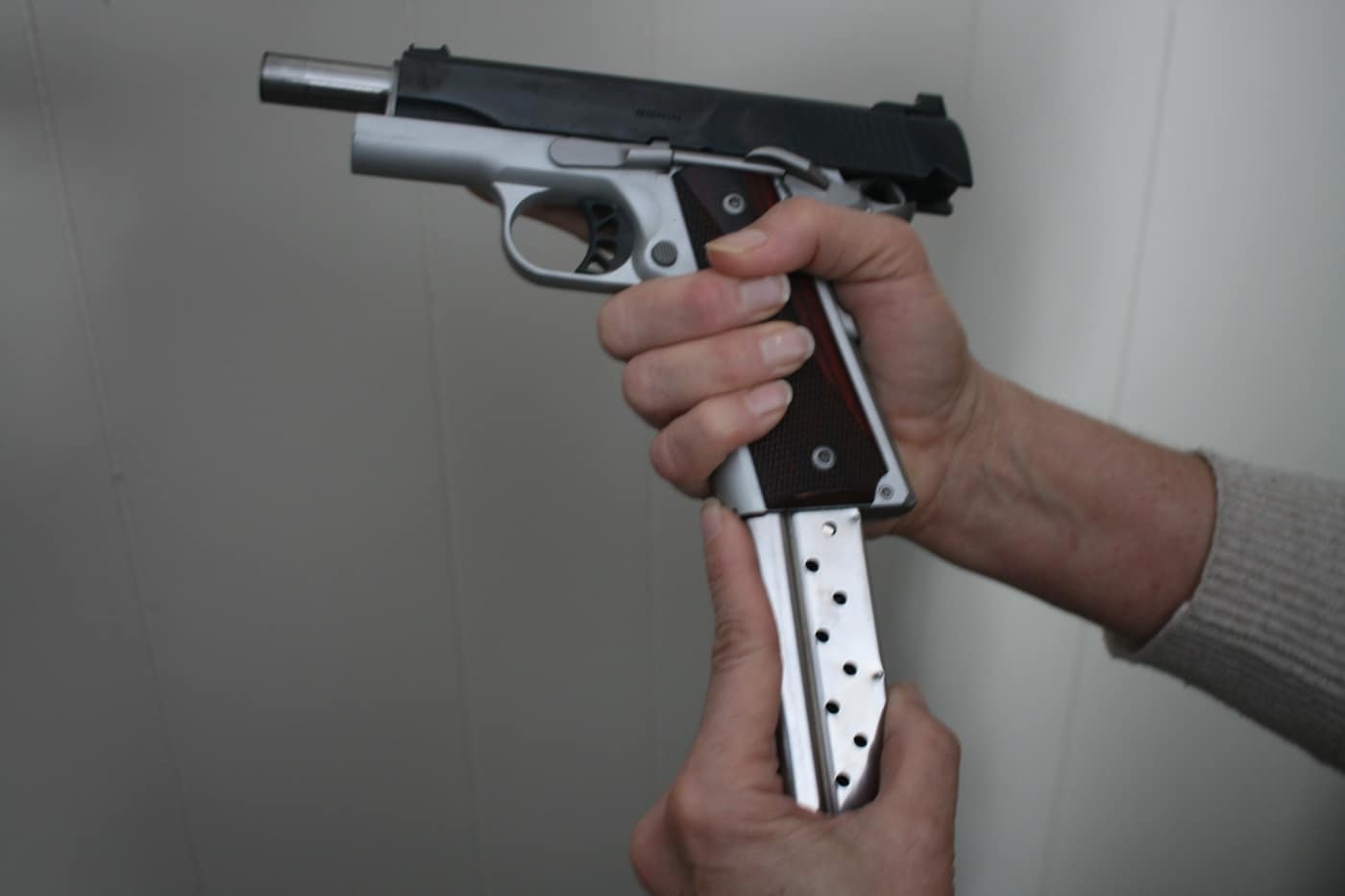
You might also consider getting an inert, training pistol in a facsimile of your carry gun. Rings Manufacturing of Melbourne, Florida makes an extensive line of accurately detailed firearms simulators for many types of handguns. I have used them extensively for demonstrating techniques, drawing from concealment, practicing movement and flashlight-assisted, low-light techniques. They come highly recommended.
Along similar lines, get yourself some inert, dummy training rounds. ST Action Pro of Cocoa, Florida, turns out some very high-quality dummies loaded in brass cases for most popular cartridges. This will enable you to practice reloading and stoppage reduction drills off the range in complete safety. But make sure you DO NOT mix any lives rounds into this process.
Dry-fire is yet another drill that can be practiced off the range. By investing a little bit of time dry-firing, you will become intimately familiar with the nuances in gripping your pistol and trigger control. I tend to keep dry-fire practice short and strive for 10 consecutive, perfect presses. If I jerk the trigger and feel the muzzle move, I start the process all over again until I get it right.
Going Hot
Most armed conflict unfolds inside of what we might characterize as conversational distance. In view of that, our training should focus on things that are most likely rather than less likely to occur.
For the armed citizen, there is a high likelihood that events will unfold very quickly at relatively close distance. To cut right to the chase, it’s very important that you be able to get your gun into action quickly if called for Work toward a smooth, efficient drawstroke with the gun, holster and type of clothing you wear when going about in polite society.
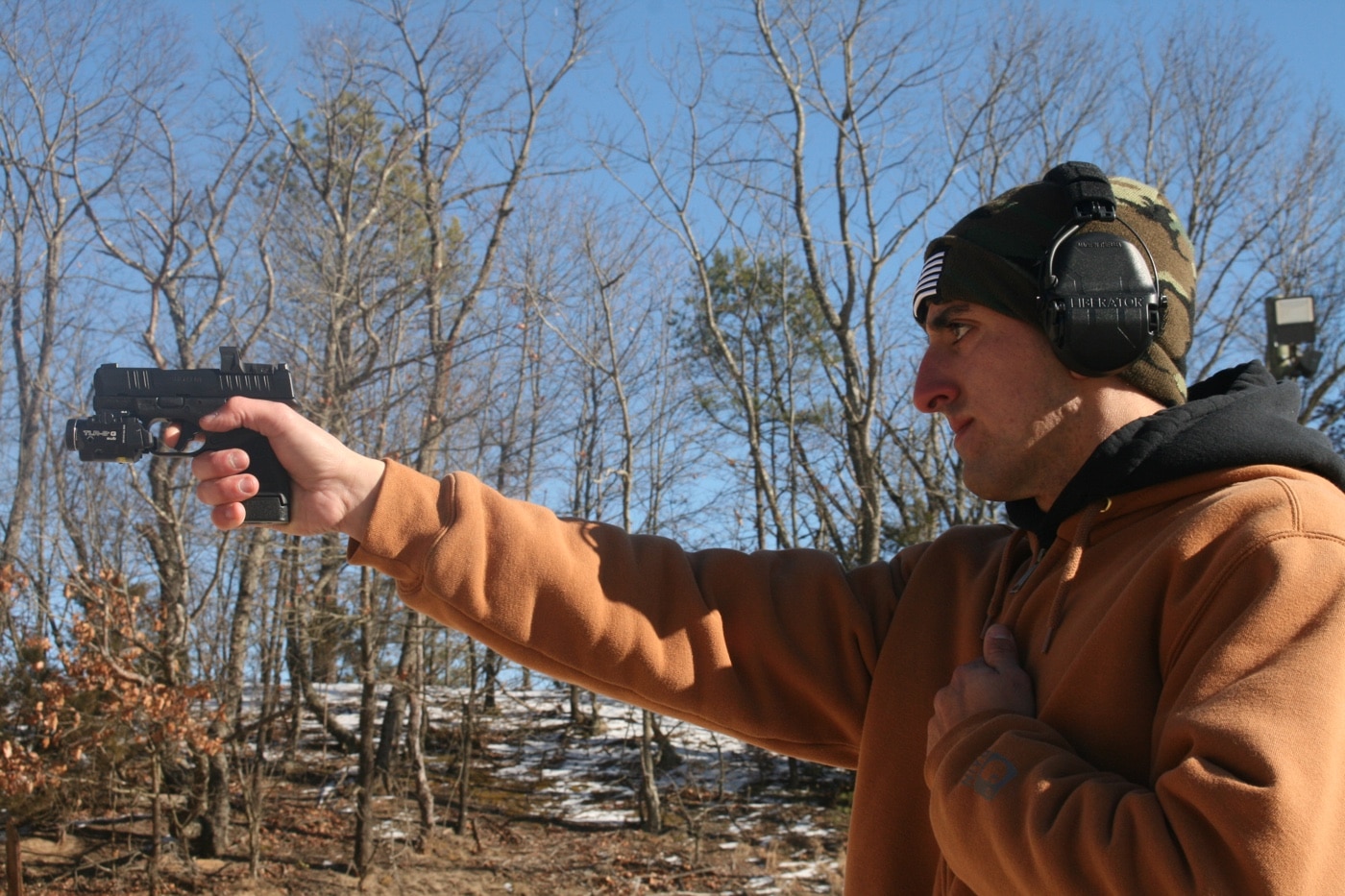
Bear in mind handguns are not the most definitive stoppers and it may take more than one round to stop a determined assailant. Consider that your assailant will more than likely be at very close range, and it remains extremely important that you shut him down as quickly as possible. In view of that, most of my practice takes place inside of seven yards. My goal is to quickly put two or three hits into the high chest area of whatever target I might be utilizing.
When I get comfortable with that, I add a little movement. I might shoot a few rounds, move laterally and shoot a few more. A variation is to explode off the X, move laterally as you draw and fire a short batch into the high chest of the target. We may not be able to move in many street situations, but movement remains a very basic tactic of putting your opponent at a disadvantage.
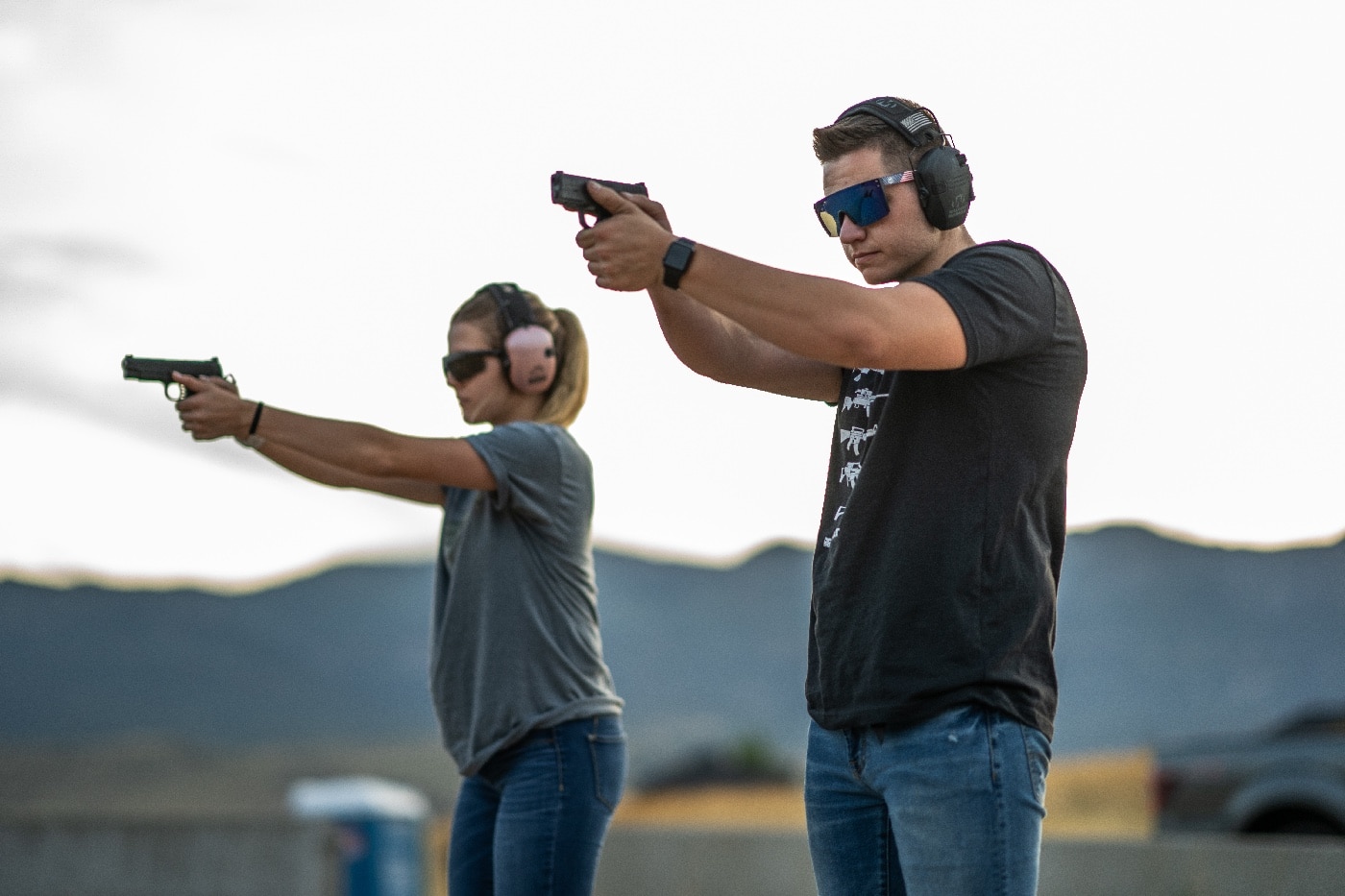
By all means, draw your pistol from concealment, striving for smooth and efficient presentation. If this is not possible because of range rules, work from a ready position and try to get hits on target as quickly as possible. Although most of my practice is accomplished with a two-hand hold, I also like to incorporate some strong- and weak-hand-only shooting into my practice routine.
Hits on Target
I don’t suppose the controversy between aimed fire and point shooting will ever be resolved, but I feel that driving the gun to eye level and getting the best possible index is the way to go. Point shooting does indeed work on unobstructed threats at very close range and, considering threats often present themselves just a few feet away, it remains a valuable skill. But even at relatively close range, movement, partially exposed threats and innocent bystanders in the background change things 180 degrees. A coarse alignment of the sights will give you a much higher likelihood of getting decisive hits on the target.
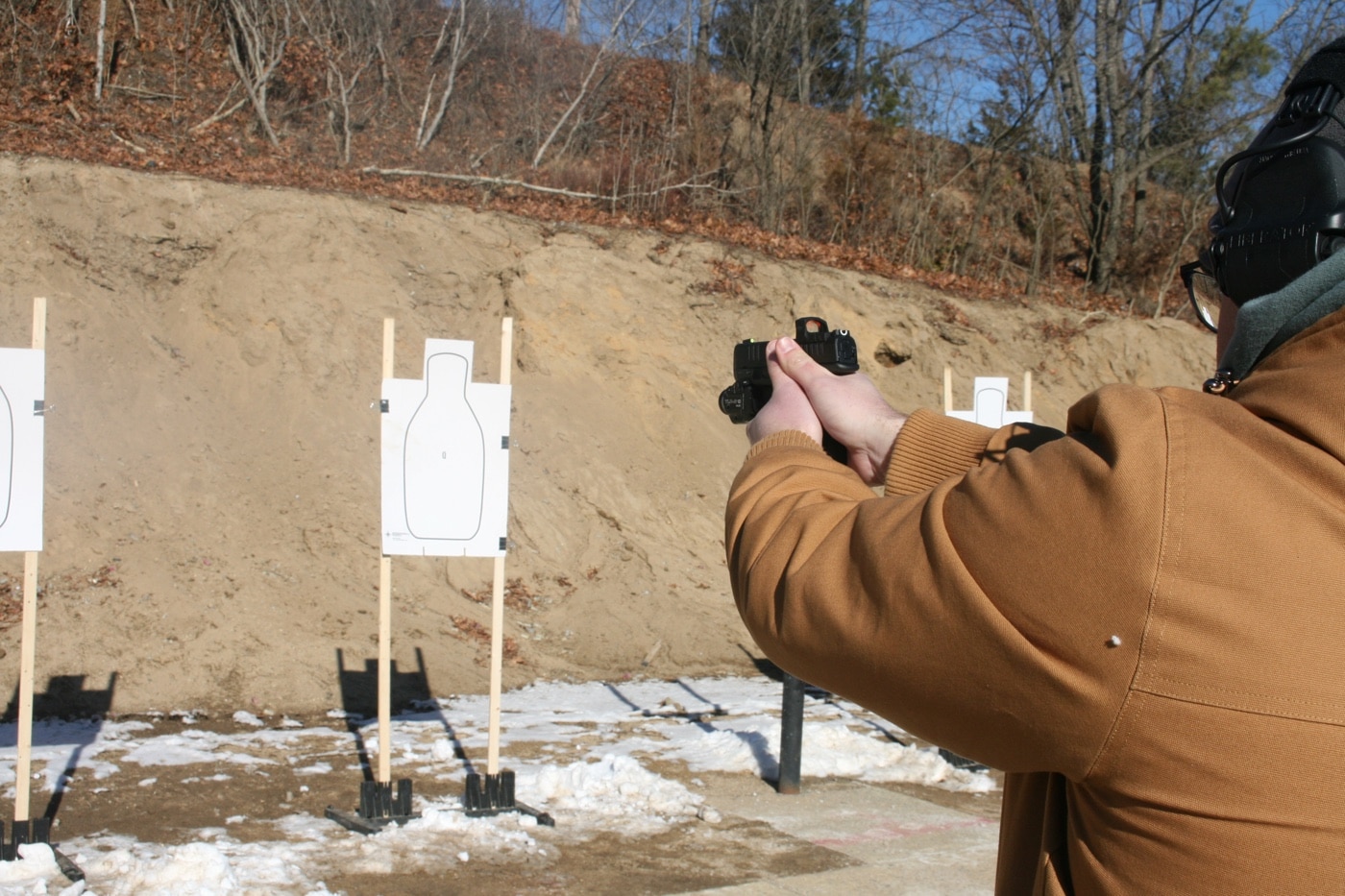
Quite frankly, the type of sights you utilize comes down to personal preference. To get the fastest possible index on the target, I like something that grabs my attention as soon as the muzzle of my pistol breaks that plane of vision between the eye and what I’m shooting at. In short, that means something bold that stands out in most backgrounds. The Hellcat’s U-Dot sighting system is a great option.
As far as target selection for practice, try to use something with a realistic size high-value scoring area. There are numerous variations out there for the taking that show a higher value for hits in the high chest as opposed to those on periphery. Old school police training targets such as the B-21 and B-27 were state of the art at one time but have been eclipsed by better options. Mark or paste the hits on your targets to note your performance and progress.
Taking It to the Next Level
The collective history of gun fighting tells us most events unfold at very close range, and this is especially true with armed citizens. You, however, may be the anomaly. With that in mind, some occasional practice at longer ranges should be part of your routine. Most of us tend to get a little sloppy as range increases, but practicing some precision shooting skills at close range can translate to better hit potential at longer distance.
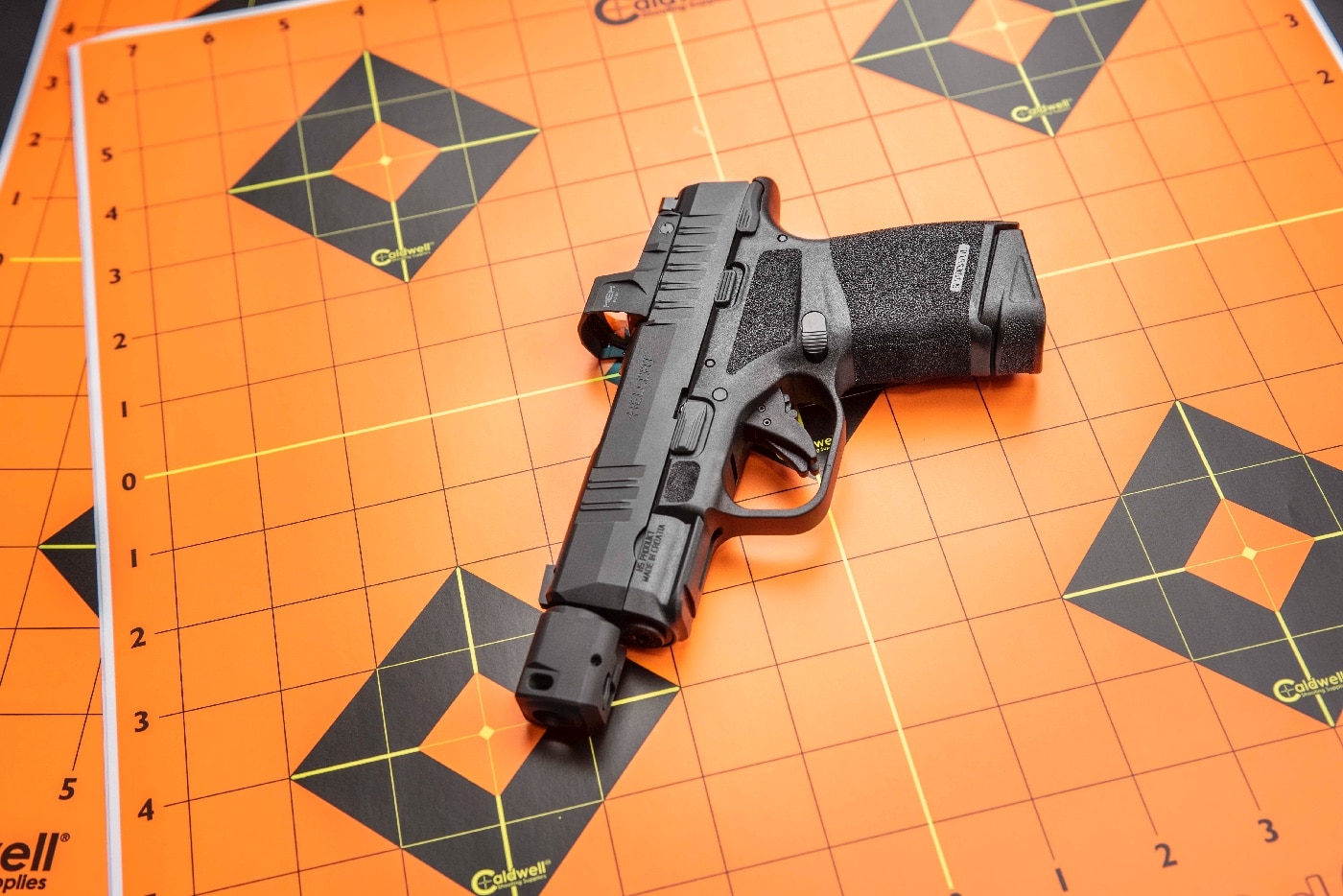
To keep my precision skills sharp, I often use targets with small circles or geometric shapes, which can be found online and printed out. Other options are post-it notes and index cards. When I shoot at extended distance, the hits come so much easier because of this.
There are of course other skills you can incorporate into your training, including use of cover, low light and simulating an injury. Another possibility is extreme close-quarters shooting where a threat has invaded your personal space and may even be in physical contact with you. But if this is new territory for you, I would suggest you seek out some professional training before jumping in with both feet. These are more advanced skills, and things can go very wrong if they are done incorrectly.
So, team, get busy. As indicated earlier, a great deal of useful practice can be accomplished off the range, including dry-fire, draw from concealment, reloading and safe movement. When you do get the opportunity to get out to the range, you will have already worked out many of the kinks and your live-fire practice could be far more productive.
Focus on the basics with the goal of fast, decisive hits at conversational distance. Practice smart and stay safe.
Editor’s Note: Please be sure to check out The Armory Life Forum, where you can comment about our daily articles, as well as just talk guns and gear. Click the “Go To Forum Thread” link below to jump in and discuss this article and much more!
Join the Discussion
Featured in this article
Continue Reading
Did you enjoy this article?

 64
64




